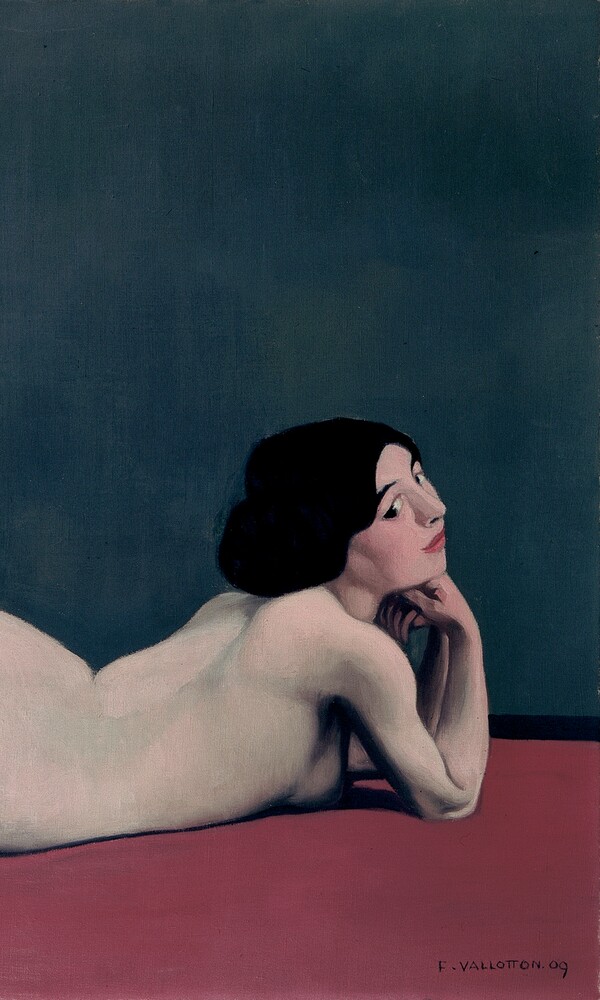Scenes of adultery against a background of plush and crimson
»With Vallotton there are only two options: you either hate him or adore him.« (The Guardian)
»Félix Vallotton, the idol of my sleepless nights!« (Daniel Richter)
Bizarre poses, bashful embraces, silent interiors and revealing shadows – Félix Vallotton’s art is imbued with a biting sarcasm and black humour that established him as an internationally acclaimed avant-garde artist of the modern period. His images are disturbing, revealing and captivating – now just as much as in 1909, when young people were refused admission to his first solo exhibition at the Kunsthaus Zürich because the nude paintings were deemed too shocking. From 15 February to 18 May 2008, the Hamburger Kunsthalle will be showing the work of this detached observer of bourgeois double standards, whose art contained elements that would later feature prominently in Surrealism, New Objectivity and Metaphysical Painting. The exhibition Félix Vallotton. Idyll on the Edge has been organised in cooperation with the Kunsthaus Zürich. It brings together more than 70 paintings and over 50 woodcuts, as well as posters, books, illustrations and vignettes designed by this fascinating but – in Germany at least – largely unknown artist.
Following Vilhelm Hammershøi and Helene Schjerfbeck, the Hamburger Kunsthalle is once again focussing attention on a ‘known unknown’ artist of the early 20th century who is definitely worth rediscovering. Félix Vallotton (1865–1925) wasn’t a particularly likeable character, however – friends and colleagues described him as reserved and tight-lipped. Vallotton was a loner whose diaries often contained scornful remarks about his fellow human beings: »The life I live is literally the opposite of the life I dreamed of. I love seclusion, silence, cultivated thinking and reasoned action – and I have to deal with machinations, foolish talk and vain affectation.«
At first glance, Vallotton’s art seems cool and controlled, its deceptive, hermetically sealed surfaces concealing the depths beneath. Even more so than in his paintings, this ambiguity is particularly apparent in Vallotton’s finely executed prints, which were held in such high esteem by his contemporaries that little attention was paid to his paintings. This exhibition at the Hamburger Kunsthalle presents more than 50 woodcuts that clearly demonstrate his sharply critical, ironic gaze. Beneath the cleanly executed black-and-white of his woodcuts lies an intricate web of suspicion, oppression, constraint and fear. The humour is decidedly black, with the result that the viewer’s scornful laughter often gets stuck in their throat.
